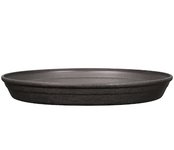Khaiba
Sapling
Hey guys ,
,
I was wondering if (humidity) trays could be used as forest planting pots, as they are much cheaper. Many forest planting pots are extremely shallow and the only differences I see are the holes in the bottom and the feet allowing for better drainage.
By drilling holes into the trays and adding some sort of elevation, would you accomplish the same result?
Or is there some other reason they aren't used as pots? I wasn't able to find anything online regarding this issue.
Cheers,
Khai
I was wondering if (humidity) trays could be used as forest planting pots, as they are much cheaper. Many forest planting pots are extremely shallow and the only differences I see are the holes in the bottom and the feet allowing for better drainage.
By drilling holes into the trays and adding some sort of elevation, would you accomplish the same result?
Or is there some other reason they aren't used as pots? I wasn't able to find anything online regarding this issue.
Cheers,
Khai




